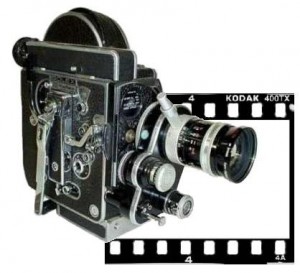
Technology, short attention spans and an ever-hungry audience have rapidly changed the practice of media relations. The new news release is all about how you can optimize it for an online presence. Breaking news comes more often from Twitter than live press coverage. Though newsrooms are smaller now, the news cycle never stops. How do you break through in today’s warp-speed and high-competition news environment?
How reporters see the change in media relations
To look further into this changing landscape, I spoke with two reporters on their views of how media relations is changing in the digital age. Hugh Lessig covers the military in the Hampton Roads region of Virginia. Kristina Wong covers defense, foreign policy and politics in Washington, D.C.
1. With your time in the industry, what are the biggest changes you’ve seen in the newsroom?
Lessig: I began my full-time career in newspapers in 1983. It is a far different business today. Staff cutbacks and the rise of the Internet are the two biggest trends, and they are related. The industry has lost money because it began posting online content for free. Circulation dropped, print advertising became less in demand and newspapers cut staff. As the newspaper became smaller – both in terms of pages and personnel – it has changed how we follow stories and the types of stories we do.
Two examples: Long-form journalism – those big Sunday stories – still exist, but we’ve had to pick our targets more selectively because time and and space are at a premium. Second, web hits now supplement old-fashioned news judgment. If you want to write a follow-up to today’s news, it’s not just about what you think, it’s how well the story is doing online.
Wong: The biggest changes I’ve seen during my time in the industry is news shifting from a print and television platform to a web platform, then the proliferation of news blogs, then news outlets’ foray into social media platforms like Facebook and Twitter.
2) How has the advent of social media and these other changes affected how you cover stories?
Lessig: Social media and other changes create huge challenges when it comes to focusing on the job. Multitasking has always been a necessary skill – even before the term was invented – but now I have to blog, Tweet, post on Facebook, take photos and video in addition to traditional news-gathering. It is quite difficult, frankly.
Wong: All these changes have made speed more important and accuracy less important. While most outlets strive for both, there is more pressure than ever to be fast, in order to beat or join the crowd when stories break. There is pressure on journalists to do print and web stories, as well as participate on social media platforms.
3. What advice would you give to those who are pitching you stories in this new digital age? What would make your job easier?
Lessig: When it comes to pitches – and I hate to say it, as a “word” person – but photos and video potential matter a great deal. That will often make the difference between whether it goes on A-1 or is buried inside. I have been told to think of myself as an online reporter first and a print reporter second. That’s how you should pitch stories to me.
Wong: I’ve gotten some of my best story ideas from public affairs offices’ websites. Chances are, if I follow their Facebook page or Twitter feed, I am interested in the topic or subject matter. Then, I can choose to engage. It seldom helps to be pitched something that is completely outside the realm of what I’m interested in or assigned to cover.
4) What is your biggest pet peeve when it comes to pitches?
Lessig: Biggest pet peeve: Media contacts not returning your calls in a timely manner, then calling a week later and saying “do you still need this?” Seriously? In this 24-hour news environment, there is no excuse for being so tone deaf. On the bright side, I don’t find that happening with my military contacts up here in Hampton Roads. They “get it.”
Wong: My biggest pet peeve is when someone sends a pitch and includes links to stories that have already been done on the particular story idea — it will lower incentive to do my own story if it’s already been covered.
What does this mean for media relations today?
To recap, make the job of the reporter as easy as possible. Think in imagery opportunity. Follow up quickly. Keep your social media platforms active and relevant. Be original with your pitch. Wong also recommends inviting journalists out to events with officials in attendance to garner media attention.What other recommendations have your media contacts provided you?
Hugh Lessig is the military reporter for The Daily Press, covering all branches of the armed forces that reside in the Hampton Roads area. Working for newspapers in Pennsylvania and Virginia, Lessig has covered politics, business and government for more than three decades.
Kristina Wong is a staff writer at The Hill where she covers defense, foreign policy and politics. She has been actively involved in reporting on Washington, D.C., events since 2011 with various publications.





